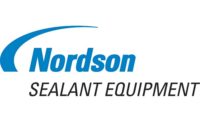Automotive manufacturers, particularly in North America, primarily use two-component waterborne, reactive hot-melt, and solvent-borne adhesives for laminating thermoplastic olefin, polyvinyl chloride and leather skins to polyethylene and polypropylene foams. Additionally, these adhesives are used to laminate these foils to rigid substrates for applications like interior door panels, consoles and instrument panels. Although such adhesives are well-known and in common use, manufacturers and suppliers of automotive interior components seek opportunities to improve environmental factors, sustainability, ease of manufacturing and cost effectiveness for numerous reasons.
First, most laminating adhesives used for vehicle production, particularly in North America, use a two-component formula, in which two components are combined in a pre-mix room away from the manufacturing line. The mixing process is time-consuming and requires product to be transported from the pre-mix room to the line – where costly automatic mixing equipment is used – which is purchased separately or built into the adhesive price.
Second, although a two-component mixture produces a fast reaction time, once the reaction begins, it is essentially unstoppable. Any material mixed with the crosslinker and not used while the material is still workable must be discarded, typically resulting in a pot life of four hours. Further, the mixing equipment must be cleaned out before more of the adhesive--or a different adhesive formulation--can be mixed.
Consequently, manufacturing plants risk losing adhesive materials if they mix too much and, even more significant, risk a line shutdown if they are overly cautious and fail to mix enough to keep up with production. The impact of a shutdown is far costlier than the lost chemicals.
Benefits of a One-component, Water-based Laminating Adhesive
A one-component, water-based laminating adhesive resolves the characteristic issues associated with two-component processes, by enabling assembly plants to eliminate conventionally troublesome steps and make a wide range of potential problems simply disappear.
No Pre-mixing Required
One-component laminating adhesives eliminate the need to mix precise formulas in a separate pre-mix room because they consist of only a single component. The benefits of this are broad and include:
- Messy and time consuming preparation time is eliminated
- Pot time and open-time restrictions are eliminated, giving manufacturing plants the freedom to separate adhesive application and lamination operations when doing so is convenient
- Reduced complexity for purchasing, warehousing and manufacturing since there is no longer a need to carry extra inventories of adhesive components.
- Overtime pay is reduced as there is no need to pay for mixing and preparation before line operations begin.
Application Savings
High-scrap rates for adhesives and vehicle parts can result when a two-component adhesive is not mixed properly or when laminated parts are not bonded quickly enough or mixing proportions are incorrect. Scrap rates from one-component adhesives are far lower. During applications, workers can use 100 percent of the one-component adhesive as none is wasted in pots or the application step, unless overspray occurs. Concern about mixing too much or too little adhesive disappears as no mixing is required.
Henkel’s One-component Lamination Adhesive Solution
Henkel’s one-component, waterborne lamination adhesive, AQUENCE® PL 5101™ P, offers the above advantages and more, including a six-month shelf life and low volatile organic compounds, while meeting a variety of automotive manufacturer specifications under a number of production scenarios. After the laminated part is installed in the vehicle, 5101™ P continues to offer advantages, including high resistance to elevated temperatures in the environment as well as the ability to withstand deep-draw areas in severely contoured vehicle parts.
For more information on Henkel’s interior capabilities or AQUENCE® PL 5101™ P please contact us or visit us at Booth H at the upcoming Ward’s Auto Interiors conference on May 9, 2017 at Cobo Center in Detroit, Mich.
For more information, contact:
Barb Wehrle, Business Development, Interior Adhesives, Henkel
Email: barb.wehrle@henkel.com



